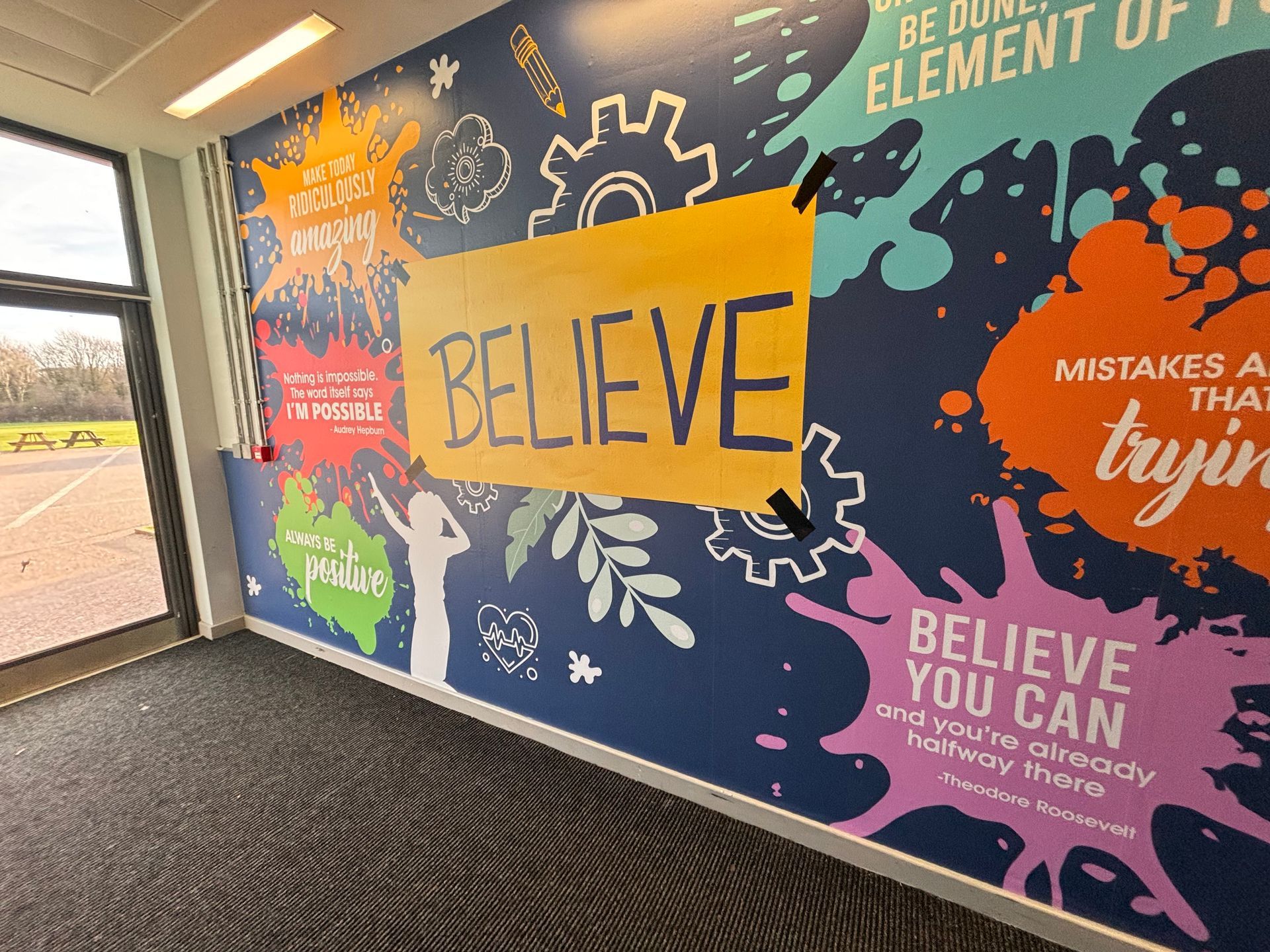Impact on pupils 4
Enhancing the learning process through wall graphics can create an engaging and dynamic educational environment. Here's how you can incorporate elements into wall graphics to promote learning;

Augmented Reality (AR) Integration;
Educational AR Content;
- Utilise AR technology to showcase 3D models and animations that bring subjects like biology, physics and history to life. For instance, a wall graphic depicting the system can display planets in motion when viewed through an AR application.
Interactive Timelines;
- Develop AR- enhanced timelines or historical narratives that offer layers of information and context when scanned with a device.
Gamified Learning;
- Integrate QR codes or markers into the graphics for quizzes, puzzles or scavenger hunts. Completing these activities could unlock insights or virtual rewards.
Virtual Excursions;
- Design wall visuals that act as gateways to field trips, enabling students to explore museums, historical landmarks or natural wonders through AR experiences.

Interactive Surfaces
1. Whiteboard Walls;
- Creating Spaces for Collaboration: Set up sections on the walls where students can work together to solve problems, share ideas, or jot down their thoughts. This approach benefits math and science, as visually working through problems can enhance comprehension.
- Rotating Content: Teachers can utilise these areas to showcase questions, prompts, or challenges regularly, ensuring that the material remains dynamic and captivating.
2. Interactive Whiteboard Coating;
- Versatile Teaching Resources: Apply whiteboard coating to walls to transform any surface into a space where information can be written and erased. This feature is ideal for lessons, student presentations, or collaborative tasks.
- Enhancing Visual Learning: Both teachers and students can sketch diagrams, create charts, and draw mind maps directly on the walls to foster a learning atmosphere.
Sensor Based Interaction
1. Touch Responsive Panels;
- Hands-on Educational Experience: Integrate touch panels into wall graphics that react to touch inputs. For instance, touching a part of a diagram could trigger the display of information about that organ or system.
- Interactive Geography: Develop maps that allow students to interact by touching regions to learn about the geography, culture or historical events associated with those areas.
Teach students how to creatively utilise the features, encouraging them to actively explore and interact with the content.
4. Receiving Feedback and Assessment;
- Progress: Establish a feedback mechanism to gather input from students and teachers regarding the effectiveness and user-friendliness of the features. You can use this feedback for enhancements.
- Measuring Success: Define performance indicators. Consistently assess the impact of interactive wall graphics on student engagement and educational outcomes.
By incorporating these elements into wall graphics, schools can turn walls into impactful educational tools that promote a more immersive, hands-on learning experience.








